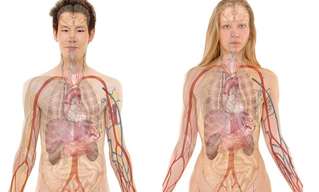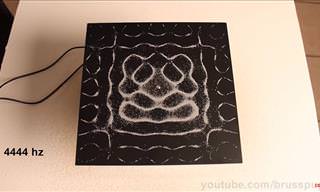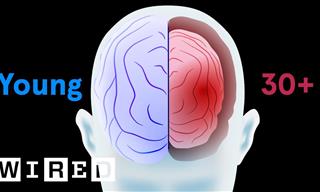
In a breakthrough that sounds like something straight out of science fiction, a team of U.S. scientists is on the cusp of transforming how we think about fitness and health maintenance. Picture this: the health perks of a rigorous gym session, all encapsulated in a tiny, easy-to-swallow pill. This isn't a futuristic fantasy; it's the reality being forged by the novel drug SLU-PP-332.
At its core, SLU-PP-332 is designed to do something quite extraordinary. It taps into our body's natural metabolic pathways—the same ones that get activated when we exercise. For those of us not quite up to speed with the nitty-gritty of metabolic pathways, think of them as the body's method of converting what we eat into energy, a process crucial for everything from moving our muscles to keeping our brain ticking.
The early results are in, and they're promising. Rodents given a daily dose of this drug showed marked improvements in muscle function, overall fitness, and endurance, and they didn't have to do a single extra minute of exercise. That's right, the mice got fitter without moving a whisker more than usual.
This discovery was shared with the world at the American Chemical Society's Spring meeting of 2024 by Bahaa Elgendy, a chemist from Washington University. Elgendy and his team are breaking new ground here. They've targeted what was once thought to be an "undruggable" part of our metabolism. Essentially, they're finding ways to pharmaceutically mimic the effects of exercise on a metabolic pathway that was considered too complex to manipulate with drugs.
Why does this matter? Well, if this works in humans as it has in mice, it could be a game-changer for treating some of the trickiest health conditions we face, like neurodegenerative diseases and heart failure. Imagine being able to provide some of the key benefits of exercise to someone who's physically unable to do so.
The science behind SLU-PP-332 zeroes in on something called estrogen-related receptors (ERRs). Without getting too deep into the molecular jungle, ERRs are a group of proteins that help regulate our body's energy use. They're involved in a whole host of critical functions, from how our body responds to inflammation to how it grows and repairs cells. Normally, the best way to get these ERRs going is through exercise, but SLU-PP-332 might offer an alternative route.
The collaborative efforts of scientists from the University of Florida and Washington University in St. Louis have been pivotal. They're not just focusing on any old ERRs; their sights are set on three specific types, a triad that has never been successfully targeted before. Their pioneering work has even led to the creation of Pelago Pharmaceuticals, a startup poised to bring these findings from the lab bench to the bedside.
Past experiments paint a compelling picture: mice treated with SLU-PP-332 developed muscles like those of an endurance athlete and demonstrated a significant increase in their treadmill running capacity. What's more, they managed to keep the fat at bay, despite eating and moving as they usually would. According to Thomas Burris, a pharmacist at UF, this compound essentially convinces skeletal muscles to undergo the same changes we'd see with regular endurance training.
It's essential, however, to note that SLU-PP-332 isn't a magic bullet. Exercise, with its myriad benefits for physical and mental health, can't be fully replicated by a pill. But for individuals who, for whatever reason, can't engage in traditional forms of exercise, this drug could be a lifeline.
The research on SLU-PP-332 is still in the early days, and there's much we have yet to learn. Yet, the possibility it represents is enormous. It's not just about offering a shortcut to fitness; it's about breaking down barriers to health and well-being for those who face the greatest challenges in achieving it. As this journey from concept to cure continues, it's a story we'll be keeping a close eye on, one that promises to redefine our approach to physical health and resilience.

Stair Climbing May Be One of the Most Beneficial Exercises
These tips will show you how climbing stairs can be the best way for you to strengthen your legs and get a solid workout.

The Facts You Didn't Know About the Human Body...
Discover 120 fascinating and surprising facts about your body you may not have known. Going over most of the body parts, you will learn so much you never knew about the body we all use.

6 Easy Exercises That'll Really Help Your Posture
As the years go by, our bodies undergo many changes, one of which is the formation of a hunchback. These exercises will help you to improve your hunchback!

Learn How Strong Muscles Can Extend Your Life Expectancy
According to a recent study, people with more muscle strength tend to live longer lives. Read all about it here.

4 Areas in the Body Women Must Exercise and How to Do So
In the following article we explore 4 important body areas for women to improve and exercises to do so.

Science Breakthrough: An Immunization Against Skin Cancer?
This scientific breakthrough offers hope for those who are struggling with skin cancer. You are now invited to discover more about this revolutionary vaccine.
 24:11
24:11
25 Game-Changing Megaprojects That Will Change Our World
These incredible megaprojects that are set to redefine our world in 2025.
 4:52
4:52
Neon Lights: a Beautiful Union of Science and Art
Neon signs are a beautiful blend or artistry and science, and knowing the history and the science behind them make them even more exciting
 3:07
3:07
The Speed of Light Visualized in a Magnificent Video
Have you got the patience? Watch, in scale, just how long it takes light to travel from Earth to Mars
 1:29
1:29
A Must See: White Cells Devouring Bad Bacteria!
A real look at how white cells identify and consume harmful bacteria.
 3:39
3:39
Magic is Only A Vibration Away With This Great Experiment
All it takes is some sand, a metal plate and carefully toned vibrations from a speaker to create stunning and complex patterns. This video shows you the amazing results!

PayPal Versus Credit Cards: Here's the Lowdown!
Just how safe is PayPal? Should you have a PayPal account or should you pay for all online purchases using a credit card? All is revealed here!
 10:01
10:01
19 Things to AVOID to Make Your Phone Live Longer
19 common mistakes we all make, that make our phones age quicker.

Is Weekend Sleep as Good as Regular Sleep? Let's Check
If you thought sleeping in on the weekend was a bad habit, you're about to find out that it's quite the opposite.
 13:01
13:01
Understanding the Aging Process of Our Body Parts
Find out how every organ and body part in our body changes with age.
 14:34
14:34
What to Do (and Avoid) When Setting Up a Smart Home
Here's how you can set up a family-friendly smart home that will last long.
 4:57
4:57
Mjøstårnet - The World’s First Wooden Skyscraper
Mjøstårnet is an 18 story tall skyscraper towering over the Norwegian countryside. What makes it so special is that it's made entirely out of wood...
 6:25
6:25
Do You Like the Smell of Rain? This Is Why
One of the best things about rain and thunderstorms is that clean fresh smell afterward. But what actually causes that distinct scent?

10 New Things We've Learned About The Brain
We have learned some astonishing new things about the human brain in recent times.

Doctors Make History With First Whole Eye Transplant
Surgeons in New York have performed the world’s first transplant of an entire human eye!
 3:16
3:16
You Wouldn't Believe How Far Technology Has Come
Take a look at the advancements of technology in this video. Impressive.

12 Steps That Help to Explain Einstein's Famous Theory
Have you ever wondered what Einstein's Theory of Relativity is all about? If you have, here is an easy-to-understand explanation!

20 Peculiar Microscope Photos That You Really Must See
An unseen world exists at our fingers, and thanks to these wonderful micrographs, we can get a glimpse into that dimension.

Learn Chemistry Easily with This Interactive Periodic Table
This interactive table of elements has video lectures about every element, including experiments

The Difference Between Mined and Lab-Created Diamonds
If you're seriously considering buying a loved one a diamond, then we highly recommend that you read this informative guide first!
 5:03
5:03
WHY is Sugar So Devilishy Addictive?
There seems to be a fascinating scientific explanation for why our will power is weak when it comes to sugar!
 4:40
4:40
Breathalyzers May Be More Important Than You Thought
This video does a great job in breaking down how in the future, breath analysis can be used to detect disease and prevent more invasive procedures.
 16:28
16:28
WATCH: This is What Occurs In Our Brain When We're In Love
We all love being in love, and actually crave it and need it, but what actually happens to our brains when we're in love? Watch this TED Talk to find out.

2023 in Science: Biggest Discoveries You Missed!
Let’s take a look at the most amazing scientific discoveries that made news this year.
 7:21
7:21
Science: 20 Mechanical Principles Demonstrated Using Lego
In this video, we'll explore a variety of fascinating mechanical mechanisms, all demonstrated using Lego models.
 15:07
15:07
Amazing New Scientific Discoveries You Missed in 2024
There have been so many interesting scientific discoveries this year that we have missed!

6 Remarkable Yet Overlooked Minds That Shaped Our World
These underappreciated geniuses deserve more recognition.
 5:50
5:50
The Rise of the Machines: Can Humanoid Robots Help Us?
Will humanoid robots change the way we work forever?

Science Breakthrough: An Immunization Against Skin Cancer?
This scientific breakthrough offers hope for those who are struggling with skin cancer. You are now invited to discover more about this revolutionary vaccine.
 15:55
15:55
This Incredible Documentary Takes You Into the Human Body
A beautiful and graphically advanced animation sheds light on the mysteries of the human body.
 10:11
10:11
10 Smart Home Gadgets You Didn’t Know You Needed
If you’ve ever wanted a smarter, more efficient home, these 10 gadgets might be exactly what you need.

This Is Why You Should Choose Paper Towels Over Air Dryers
Jet air dryers seem to provide a rapid solution to drying our hands in public restrooms, but they're actually havens for bacteria. Take a look.

5 Robotics Trends Anticipated in 2024
What does 2024 have in store for the field of robotics?

9 Great NASA Inventions That Took the World By Storm!
For around six decades, NASA have been inventing top-notch products. Here are nine great examples!
 21:51
21:51
What Will the Universe Look Like in 10 Quintillion Years?
These questions take us beyond science into the realm of imagination, as we contemplate the ultimate fate of our Universe and everything within it.

These Theories About Reality & the Universe Will Stun You
You will be shocked to discover these 10 surprising theories of the universe and reality.
 54:17
54:17
Science Philosophy: What is the TRUE Nature of Time?
Join us as we journey through theories, discussions, and insights that challenge our perceptions and broaden our understanding of time itself.

10 Tech Products You Must Double-Check Before Buying
Beware! These tech products are most commonly faked.
 5:32
5:32
The Science Behind Why Laughter is the Best Medicine
They say laughter is the best medicine. But why exactly do we laugh?

You Won't Believe That These Things Exist in Japan...
If there's one place on this planet that well and truly at the forefront of modern technology, it has got to be Japan, as these inventions prove...

Do You Have One Of These RARE Genetic Traits?
How unique are you? You might have several rare genetic traits that make you unlike most of the world's population!
 15:34
15:34
This Stunning Video Visualizes the Size of the Universe
This video visualizes the number of galaxies in the world, giving you a look into the true size of our enormous universe.
To enable your Ad-Free Subscription, please fill the fields below
Your subscription was successful, now you can enjoy an ad-free experience!!
Note: To make sure you get no ads, please make sure to log in to your account. If you are logged in already, then refresh the page. The subscription can be cancelled at any time.


